One of two Hamilton public elementary schools offering Mohawk language classes has suspended the program for this fall as the board conducts a review that will include looking at how it recruits instructors.
Now, returning students who were learning the Indigenous language, which in its own language is Kanien’kéha, must change schools or switch to studying French in September.
Christina Barahona, a local mother of three Indigenous students, said not having the class will mean her youngest, who’s returning to Queen Mary Elementary School this fall, will be “losing a piece of her identity.”
“My kids loved the program,” she told CBC Hamilton, adding, “I was pretty upset” after learning it wouldn’t be offered next year.
Barahona said her family changed schools so the children could study Kanien’kéha and “connect with their community.”
She said her children are Onondaga from Six Nations, and while Kanien’kéha is not their people’s traditional language, it’s close enough that learning it can allow greater participation in the culture, including ceremonies.
HWDSB says it will begin ‘program review’
In an email, Nick Benner, a spokesperson for the Hamilton-Wentworth District School Board (HWDSB), confirmed to CBC Hamilton that the school in the Crown Point East neighbourhood has paused its Mohawk as a second language (MSL) course.
In the last school year, about 40 students grades 4-8 were enrolled in the program at Queen Mary.
“The Indigenous Education Department will begin a program review process to determine how we can best support learners and families with accessing Indigenous language instruction that is locally relevant and responsive to learners and their communities, identities, cultures and interests,” said a statement shared by Benner.
The statement was co-signed by HWDSB’s Indigenous education lead, Jolene John, the board’s system principal for Restorative Educational LeaderSHIP, Lyndsy Baillie, and Queen Mary principal Stephanie McNeill.
“Spending necessary time to review and renew teaching and learning practices to ensure that Indigenous language instruction is accurate, authentic and accountable to Indigenous learners, families and communities is vital,” they said, adding the board is searching for ways to recruit and retain language speakers and teachers.
In response to followup questions from CBC Hamilton, John added that “ongoing work in partnership with human resources is required to untangle understandings regarding MSL teacher candidates.”
More than a dozen Mohawk and Cayuga language graduates walked across Six Nations Polytechnic’s stage in southern Ontario, marking the largest class to complete the bachelor’s degree since the start of the program in 2016.
John said job postings for the position ask for “qualified” candidates, referring to the Ontario College of Teachers and collective agreement definitions.
“This counters many ‘qualified’ Indigenous language speakers of whom are not certified.”
The board also wants to appropriately compensate such educators, John said, “recognizing that our languages are critically endangered, and as a result, we have a limited pool of authentic speakers and teachers to hire.”
Barahona said that for the last couple years, the class lacked a consistent teacher who was fluent in Kanien’kéha.
Before that, she said, her children learned from Sheila Maracle, who “lived and breathed the language.”
Language connects students’ families with culture: parent
That’s important, Barahona said, because “language goes hand in hand with the culture.”
She said her middle child won a class award and she’s been able to learn from her children.
“That’s part of reconciliation,” Barahona said. “Our kids are teaching us the language because … it was lost.
“We recognize that removing something feels like we are perpetuating that history that we know has caused so much harm to Indigenous students, families and communities,” John said.
“Our hope is that following this review and additional necessary work with HR and other departments, we will be able to stand behind a language program with great integrity knowing it is accurate, authentic and accountable to Indigenous communities.”
Former teacher says review needs a specific end date
Maracle, who says she taught HWDSB’s MSL program for nine years, told CBC Hamilton that pausing the program at Queen Mary definitely feels like “a step backwards in reconciliation.”
She said there needs to be an end date for the review “so that it doesn’t become a forgotten endeavour.”
The Indigenous educator, who moved to Richmond, B.C., two years ago, said it’s “terrible” to learn the program has been paused.
She said most Indigenous students in Hamilton are probably from Six Nations and could benefit from learning Kanien’kéha.
“It’s connected to our identity, it’s who we are, it establishes our worldview, it’s prevalent in all of our storytelling.”
The program was open to both Indigenous and non-Indigenous students and included language learning, but also history, cultural context, beading, storytelling and more, all rooted in Indigenous traditions. The school board could not confirm to CBC Hamilton how many years the program has been running.

Students seemed more confident while learning, Maracle said, noting her principal told her that as they bettered their Kanien’kéha, their English reading comprehension improved too.
She said she’d like to see the board reach out to Kanien’kéha speakers on Six Nations and commit to hiring them if they become certified teachers.
In September, Queen Mary students who wish to continue learning Kanien’kéha there can attend Prince of Wales Elementary School, which is about two kilometres away, in the Stipley neighbourhood.
The school sent those students and their families a message in April letting them know the program would be paused in September and that a future message would contain options, Benner said.
On June 19 — about a week before the end of the school year — the school let them know they would need to decide between switching schools or learning French by June 24.
Barahona’s daughter, 10, wanted to change schools, but the family decided to keep her at Queen Mary because she already has an established support network there that they don’t want her to lose.
However, Barahona said, she worries about students having to learn French now after not taking it while studying Kanien’kéha, since they may be behind their peers.
For students who choose to stay at Queen Mary, the school will have additional staff so groups of Kanien’kéha learners can keep studying together, Benner said.
Other supports for Kanien’kéha learners include a special assignment teacher focused on Indigenous education who is assigned to the school once or twice weekly to ensure French instruction aligns with an Indigenous education plan.
Source Agencies




